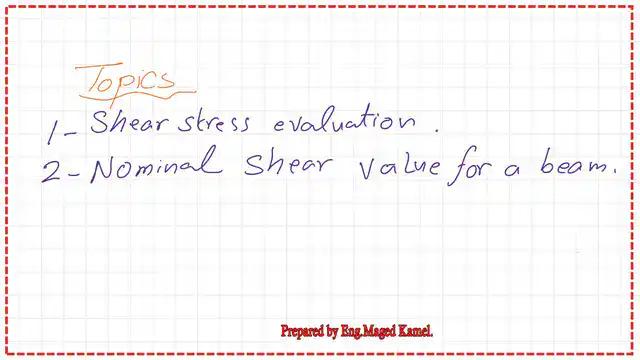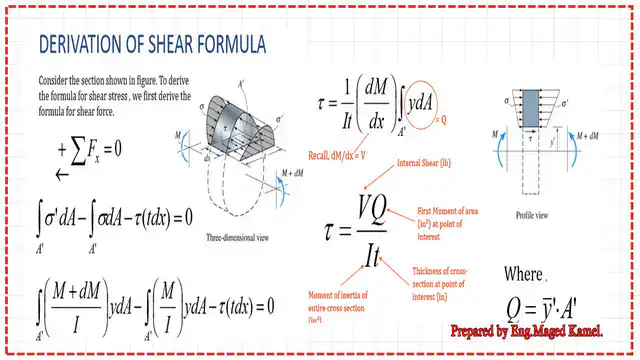Last Updated on December 4, 2025 by Maged kamel
Review of Shear Stresses for Steel Beams.
The following slide image shows the Topics that we will discuss in this post.

Introduction to shear stress for beams and proof that both vertical and horizontal shear stresses are equal.
If we take two sections of a beam apart by a distance, at elevation =y, there will be two compression forces due to the two values of M and M+dM due to the moment difference.
The stress developed from the known formula f=M*y/I will be multiplied by dA, creating two compressive forces. These forces are not equal due to the current difference in the moment, which is equal to dM. To create a balance, a shear force acting horizontally will be created.
As the sum of Fx =0, the shear force is developed to create a balance; this force value equals to shear stress* area=τ*dx*b=σ’*dA-σ*dA, but (σ’-σ)*dA (dM)*y/Ix, then τ*dx*t=dM*y/I.
How do we derive the expression for shear stress?
Making integration, we get an expression for the stress for shear τ=∫dMydA/(dx*t)=V*Q/I*T, where V is the shear.
Q is the first moment of the area at the point of interest, I is the moment of inertia for the section, and finally,t is the breadth of the section.

Horizontal shear stress for beams.
For the balance of a beam element, the horizontal stress of shear should be accompanied by vertical stress due to shear, as shown in the next slide.

It is proven that the value of τh=τv, where τv is the vertical stress due to shear, while τh is the horizontal stress due to shear, by multiplying by area and taking a moment at the edge.

The following post will contain a solved problem for stress estimation for different shapes.
For more detailed shear in bending, please read link-Shear in Bending. This links to Boston University’s Mechanical Engineering.
This is a link to the next post, ‘A Solved Problem for Shear Stress.’